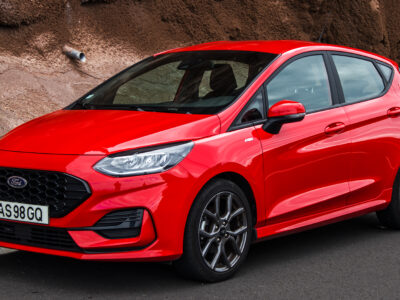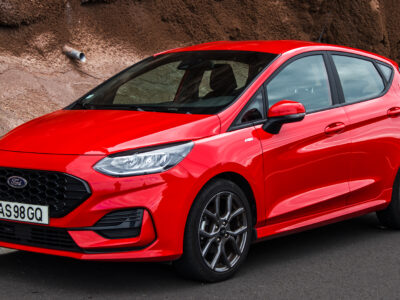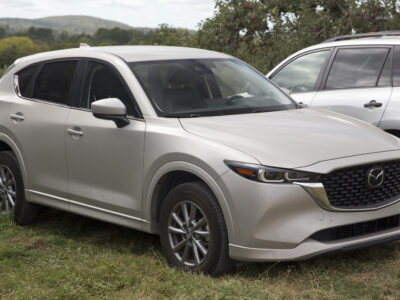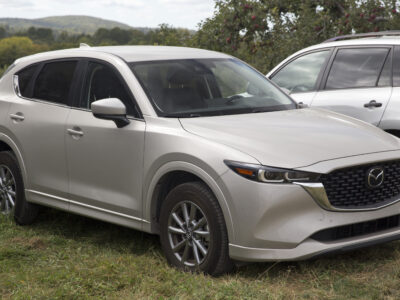
Ford Puma CO₂ Emissions: Complete Data, Efficiency, and Environmental Impact

Understanding the CO₂ emissions of the Ford Puma is crucial for anyone considering this sporty crossover or its earlier coupe versions. In this comprehensive guide, we explore emission figures for all major generations and engine configurations, helping you make an informed choice between performance and environmental responsibility.
- Overview of Ford Puma Models and CO₂ Emissions
- 1. First Generation (1997–2002): Ford Puma Coupe
- 2. Second Generation (2019–Present): Ford Puma SUV
- 3. Emission Standards Compliance
- 4. Factors Affecting Ford Puma CO₂ Output
- 5. Comparative Emission Analysis
- 6. Environmental Benefits of the Puma Hybrid
- 7. CO₂ Emission Labels and Taxation
- 9. Future Outlook: Electrification
- 10. Key Takeaways
- Frequently Asked Questions (FAQs)
Overview of Ford Puma Models and CO₂ Emissions
The Ford Puma has evolved through two major generations:
| Generation | Years Produced | Body Type | Engine Type | Transmission | Power Range | CO₂ Emissions (g/km) |
|---|---|---|---|---|---|---|
| First Generation | 1997–2002 | Coupe | Petrol | Manual | 90–125 hp | 171–178 g/km |
| Second Generation | 2019–Present | SUV | Mild Hybrid Petrol | Manual / Automatic | 95–155 hp | 96–148 g/km |
The second-generation Puma shows significant improvements in efficiency thanks to Ford’s EcoBoost Hybrid technology.
1. First Generation (1997–2002): Ford Puma Coupe
Engine and Transmission
- 1.4L Zetec-SE: 90 hp, manual gearbox
- 1.6L Zetec-SE: 103 hp, manual gearbox
- 1.7L Zetec-SE: 125 hp, manual gearbox
CO₂ Emissions
| Engine | Power | Transmission | CO₂ Emissions (g/km) | Top Speed (km/h) |
|---|---|---|---|---|
| 1.4L Petrol | 90 hp | Manual | 178 | 175 |
| 1.6L Petrol | 103 hp | Manual | 171 | 190 |
| 1.7L Petrol | 125 hp | Manual | 171 | 203 |
These early models were known for their agility but not for their environmental efficiency, typical of late-1990s petrol coupes.
2. Second Generation (2019–Present): Ford Puma SUV
EcoBoost Hybrid Innovation
The modern Ford Puma SUV integrates 1.0L EcoBoost petrol engines with 48V mild-hybrid systems, combining performance with reduced emissions.
You may be interested in reading Ford Kuga vs Ford Puma: The Ultimate 2025 SUV Comparison
Ford Kuga vs Ford Puma: The Ultimate 2025 SUV ComparisonAvailable Powertrains
| Engine | Type | Transmission | Power | CO₂ Emissions (WLTP) | Fuel Economy (Combined) |
|---|---|---|---|---|---|
| 1.0 EcoBoost 95 | Petrol | Manual | 95 hp | 122–132 g/km | 47–50 mpg |
| 1.0 EcoBoost Hybrid 125 | MHEV | Manual / Auto | 125 hp | 111–127 g/km | 48–53 mpg |
| 1.0 EcoBoost Hybrid 155 | MHEV | Manual / Auto | 155 hp | 116–132 g/km | 47–52 mpg |
| ST 1.5 EcoBoost | Petrol | Manual | 200 hp | 148 g/km | 40–42 mpg |
3. Emission Standards Compliance
The Ford Puma lineup complies with Euro 6d-TEMP and Euro 6e emission standards, ensuring reduced NOx, CO₂, and particulate outputs.
| Model Year | Standard | Technology Used |
|---|---|---|
| 1997–2002 | Euro 2–3 | Basic Catalytic Converter |
| 2019–2020 | Euro 6d-TEMP | Turbocharged with Start-Stop |
| 2021–Present | Euro 6e | Mild Hybrid + Gasoline Particulate Filter |
4. Factors Affecting Ford Puma CO₂ Output
Several factors influence the Puma’s CO₂ emissions:
- Engine Type: Turbocharged EcoBoost units emit less CO₂ than naturally aspirated engines.
- Transmission: Manual gearboxes tend to achieve slightly lower emissions than automatics.
- Driving Style: Aggressive acceleration and high-speed driving increase CO₂ output.
- Tire Pressure & Load: Underinflated tires and heavy loads increase fuel consumption and emissions.
- Hybrid Assistance: The 48V MHEV system regenerates energy under braking, reducing fuel burn.
5. Comparative Emission Analysis
| Vehicle | Engine | CO₂ Emissions (g/km) | Classification |
|---|---|---|---|
| Ford Puma 1.0 EcoBoost MHEV 125 | Petrol Hybrid | 118 | Eco-Friendly |
| Ford Puma 1.5 EcoBoost ST | Petrol | 148 | Performance |
| Nissan Juke 1.0 DIG-T | Petrol | 131 | Standard |
| Peugeot 2008 1.2 PureTech | Petrol | 124 | Eco-Friendly |
| Renault Captur 1.3 TCe | Petrol | 133 | Standard |
The Ford Puma Hybrid outperforms many rivals in CO₂ efficiency, positioning it among the most eco-conscious compact SUVs.
6. Environmental Benefits of the Puma Hybrid
- Lower Carbon Footprint: Up to 25% fewer CO₂ emissions compared to non-hybrid petrol engines.
- Regenerative Braking: Converts kinetic energy into electricity.
- Start-Stop System: Reduces idling emissions in traffic.
- Efficient Turbocharging: Maintains performance without sacrificing economy.
7. CO₂ Emission Labels and Taxation
Depending on your region, CO₂ output directly influences road tax, insurance brackets, and environmental incentives.
| CO₂ Band (g/km) | UK Vehicle Tax Band | Typical Annual Tax (£) |
|---|---|---|
| 0–100 | A | £0 |
| 101–120 | B | £20–30 |
| 121–150 | C–E | £30–180 |
| 151–170 | F–G | £200–260 |
| 171+ | H+ | £270–400+ |
The EcoBoost Hybrid (111–127 g/km) typically falls within Band B–D, offering significant tax savings.
You may be interested in reading Ford Kuga vs Ford Puma: The Ultimate 2025 SUV Comparison
Ford Kuga vs Ford Puma: The Ultimate 2025 SUV Comparison Ford Puma vs Ford Focus: Complete 2025 Comparison of Specs, Efficiency, and Performance
Ford Puma vs Ford Focus: Complete 2025 Comparison of Specs, Efficiency, and Performance9. Future Outlook: Electrification
Ford plans to introduce fully electric versions of the Puma under its EV strategy by 2025. Expected benefits include:
- Zero Tailpipe Emissions (0 g/km)
- Instant Torque & Smooth Acceleration
- Reduced Maintenance Costs
- Eligibility for EV Incentives and Tax Rebates
10. Key Takeaways
- The first-generation Puma Coupe emitted around 171–178 g/km of CO₂.
- The current Puma Hybrid emits as low as 111 g/km, demonstrating a ~35% reduction in emissions.
- EcoBoost Hybrid technology is the main driver of improved fuel economy and lower emissions.
- The upcoming electric Puma aims for zero-emission driving, aligning with Ford’s carbon-neutral goals.
Frequently Asked Questions (FAQs)
1. Which Ford Puma model has the lowest CO₂ emissions?
The Puma 1.0L EcoBoost Hybrid (125 hp) achieves around 111 g/km, depending on transmission and trim.
2. Is the Ford Puma a low-emission vehicle?
Yes, particularly the hybrid versions, which fall into favorable low-emission tax bands.
3. Does the Ford Puma use AdBlue or diesel technology?
No. All Puma models use petrol engines, and the latest ones employ mild-hybrid petrol systems.
4. How does the Puma’s CO₂ compare to rivals?
It’s generally lower than equivalent petrol SUVs like the Nissan Juke or Renault Captur.
 Ford Kuga vs Ford Puma: The Ultimate 2025 SUV Comparison
Ford Kuga vs Ford Puma: The Ultimate 2025 SUV Comparison Ford Puma vs Ford Focus: Complete 2025 Comparison of Specs, Efficiency, and Performance
Ford Puma vs Ford Focus: Complete 2025 Comparison of Specs, Efficiency, and Performance Ford Puma vs Skoda Kamiq: Ultimate SUV Comparison 2025
Ford Puma vs Skoda Kamiq: Ultimate SUV Comparison 20255. Will there be an all-electric Ford Puma?
Yes. Ford has confirmed that a fully electric Puma will be released by 2025.
If you want to know other articles similar to Ford Puma CO₂ Emissions: Complete Data, Efficiency, and Environmental Impact you can visit the category Blog.
Deja una respuesta






More content of your interest